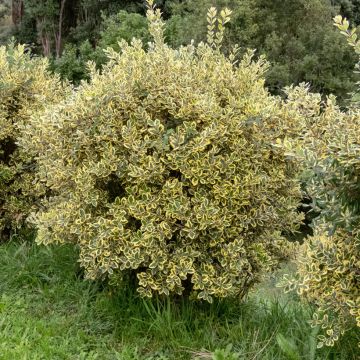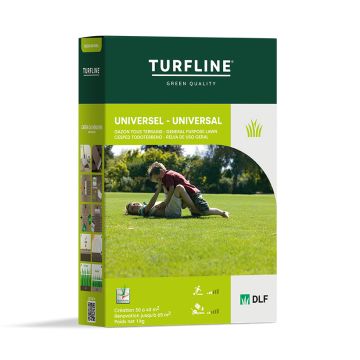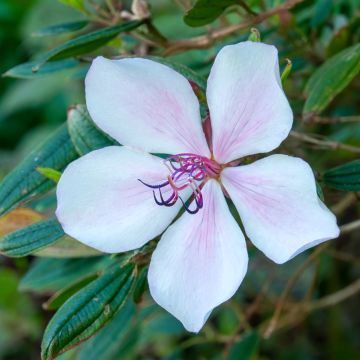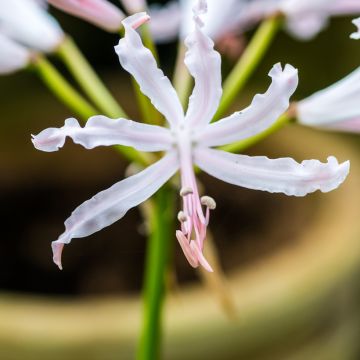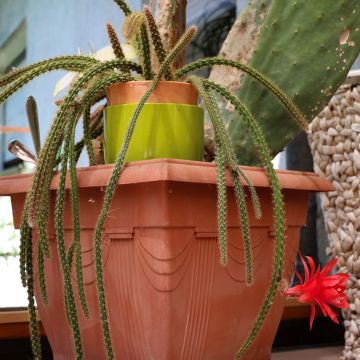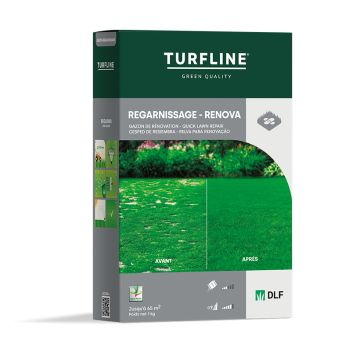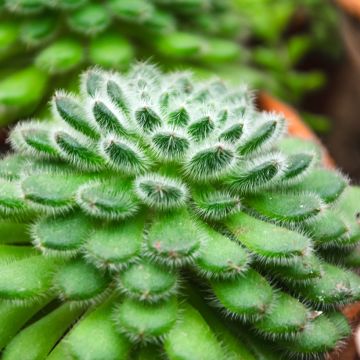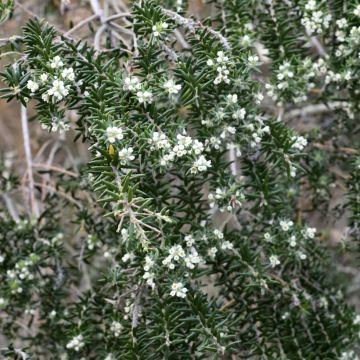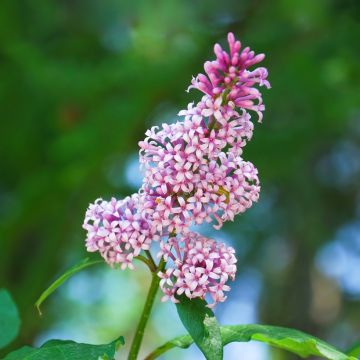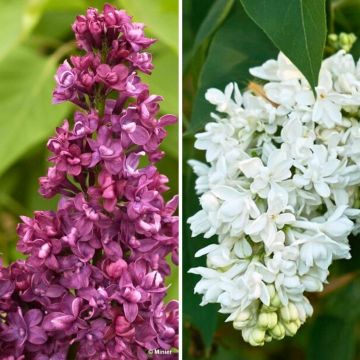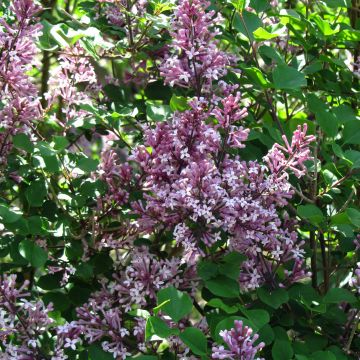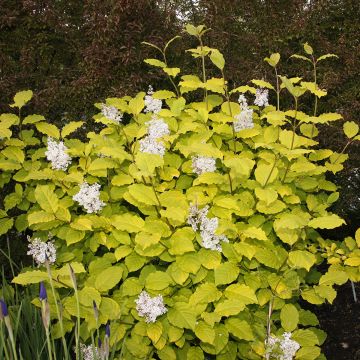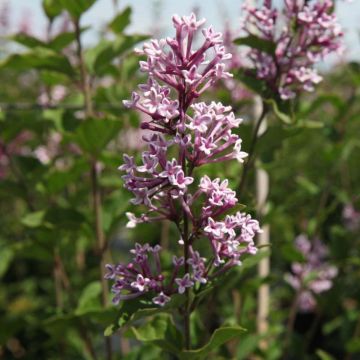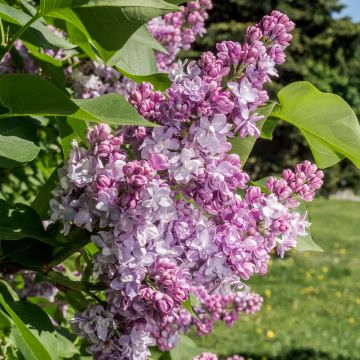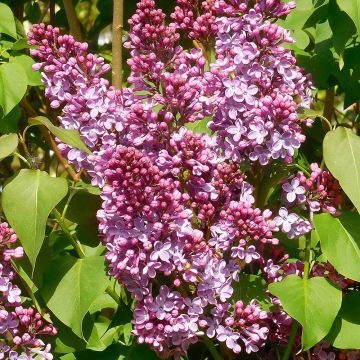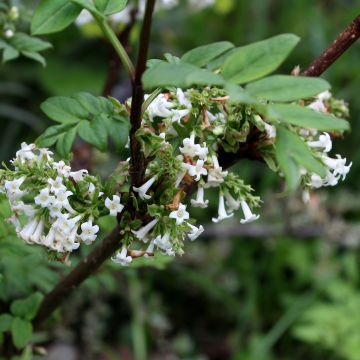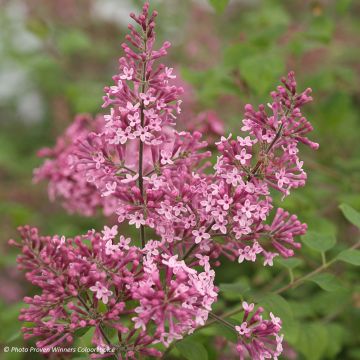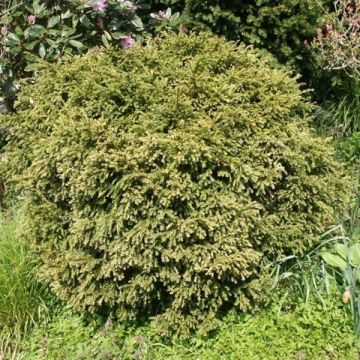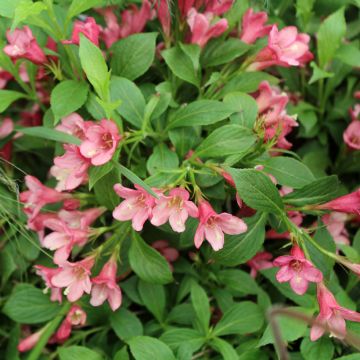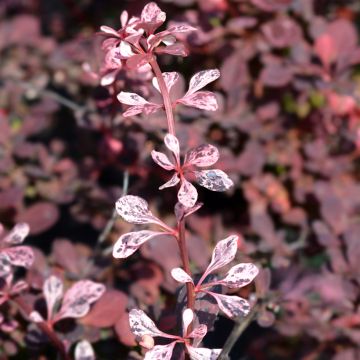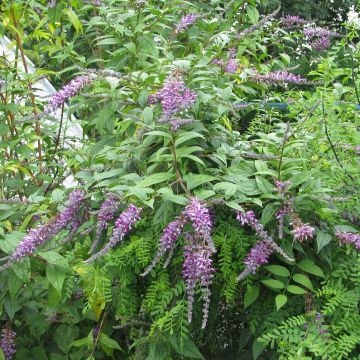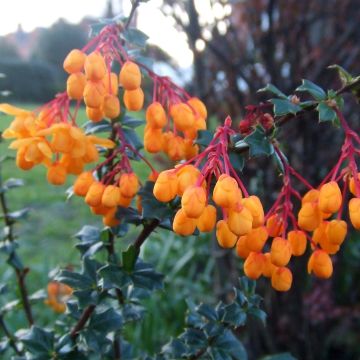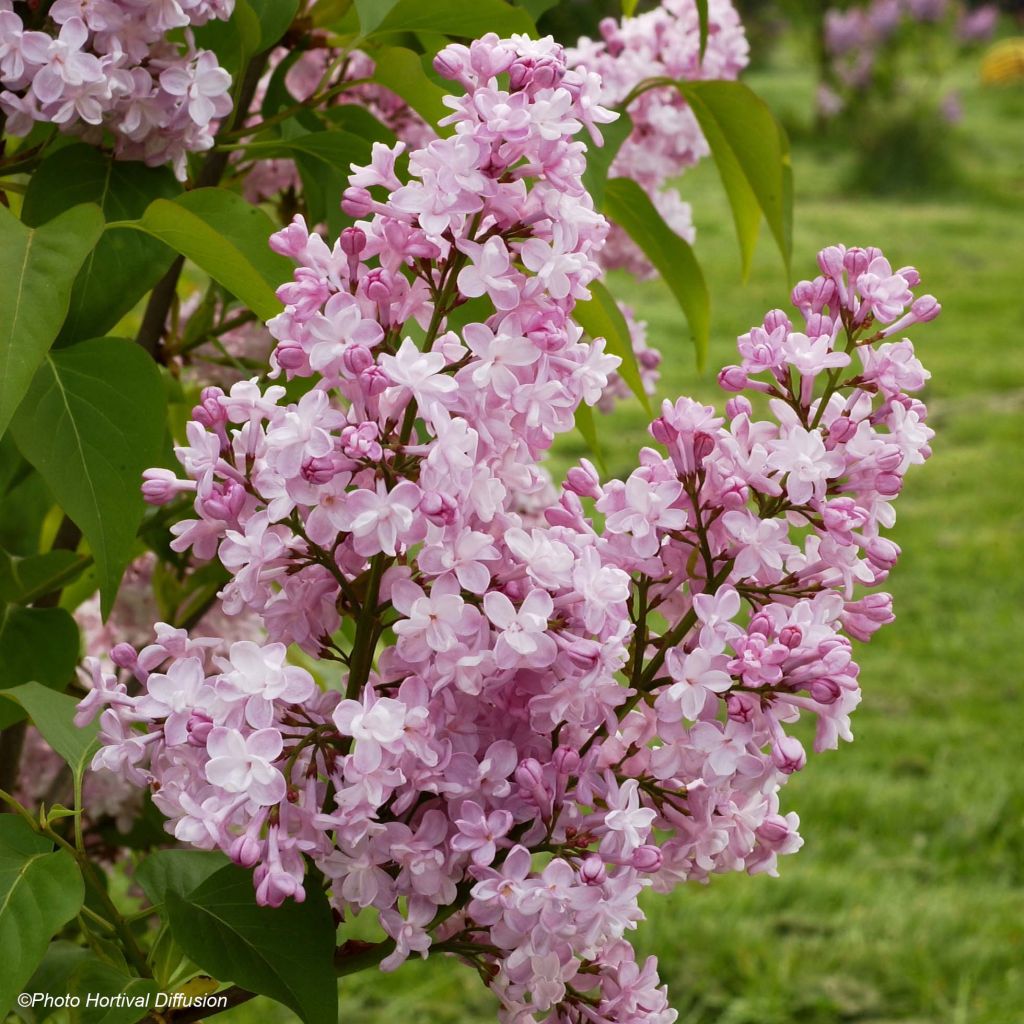

Syringa vulgaris Zhemchuzhina
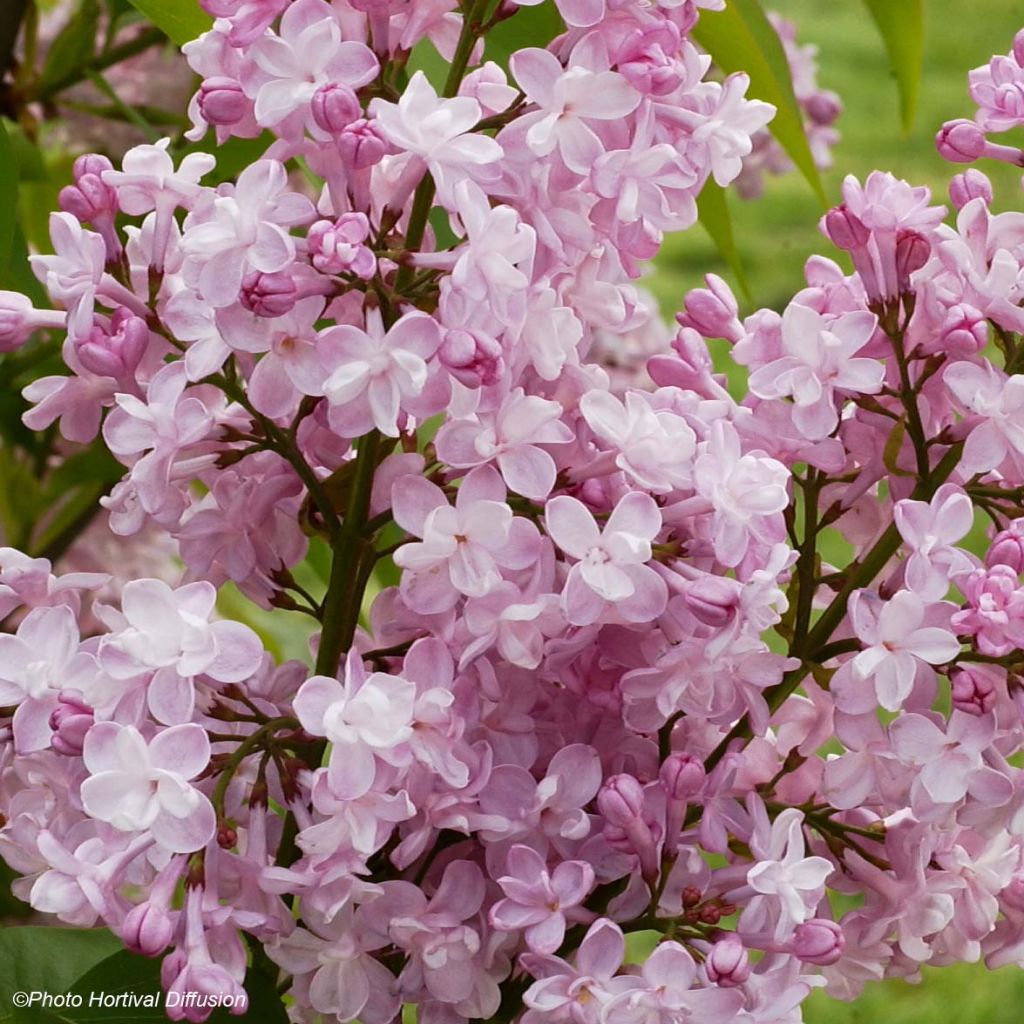

Syringa vulgaris Zhemchuzhina
Syringa vulgaris Zhemchuzhina
Syringa vulgaris Zhemchuzhina
Common Lilac, French Lilac
Why not try an alternative variety in stock?
View all →This plant carries a 24 months recovery warranty
More information
We guarantee the quality of our plants for a full growing cycle, and will replace at our expense any plant that fails to recover under normal climatic and planting conditions.
From €7.90 for pickup delivery and €6.90 for home delivery
Express home delivery from €8.90.

Does this plant fit my garden?
Set up your Plantfit profile →
Description
The common lilac or Syringa vulgaris 'Zhemchuzhina' is an excellent Russian variety dating back to 1964, with a remarkably fragrant spring flowering. Its large clusters of single to semi-double florets display a tender blue-violet to light pink colour, mixed with pretty rose-purple buds. This deciduous bush with a very bushy habit also stands out for its beautiful vigour in the garden, allowing it to thrive in a large flowering hedge or a wild shrub border. Its delicate and fragrant flowers are ideal for making bouquets.
The Syringa vulgaris 'Zhemchuzhina' is a deciduous bush from the olive family, obtained in Russia by V. Bibikova and N. Smol'skiy in the early 1960s. It is often forgotten that the common lilac, also known as European lilac, is native to Southeast Europe and Western Asia, specifically the Balkan Peninsula, and arrived in Western Europe at the end of the Renaissance. In nature, this untamed plant with highly fragrant blue-violet-purple flowers colonises rocky hills and withstands cold winters.
The 'Zhemchuzhina' variety forms a sturdy bush with an upright and rounded habit, reaching an average height of 3m (9 ft 10 in) and a spread of 2.50m (8 ft 2 in). Its triangular and heart-shaped leaves, measuring 4 to 12cm (1.6 to 4.7 in) long and 3 to 8cm (1.2 to 3.1 in) wide, appear in spring in a medium green shade with a satin finish. Flowering takes place in early May. At the tips of one-year-old branches, compound clusters called thyrses, measuring 15 to 18cm (5.9 to 7.1 in) long, appear. The rose-purple floral buds open into light rose-violet florets with bluish reflections, creating a range of tender colours without being insipid.
Easily grown in cool and relatively water-rich climates, even in mountainous areas, the common lilac 'Zhemchuzhina' thrives in ordinary, moist, preferably calcareous but well-drained soils. Use it abundantly mixed with other white, pink or red varieties in large flowering hedges, alongside single-flowered roses, mock oranges, deutzias, serviceberries, Itea or large buddleias (B.macrostachya, B.officinalis, B. alternifolia). A hedge of lilacs, flowering cherries, Chinese almond trees, Japanese quinces, and ornamental apple trees, planted above a sunken path, is a true delight in spring. It can also be used as a standalone plant, surrounded by a ground cover rose bed, in a small dedicated space, to transform this modest subject into a grandiose bush, covered in glory in the heart of spring.
Syringa vulgaris Zhemchuzhina in pictures
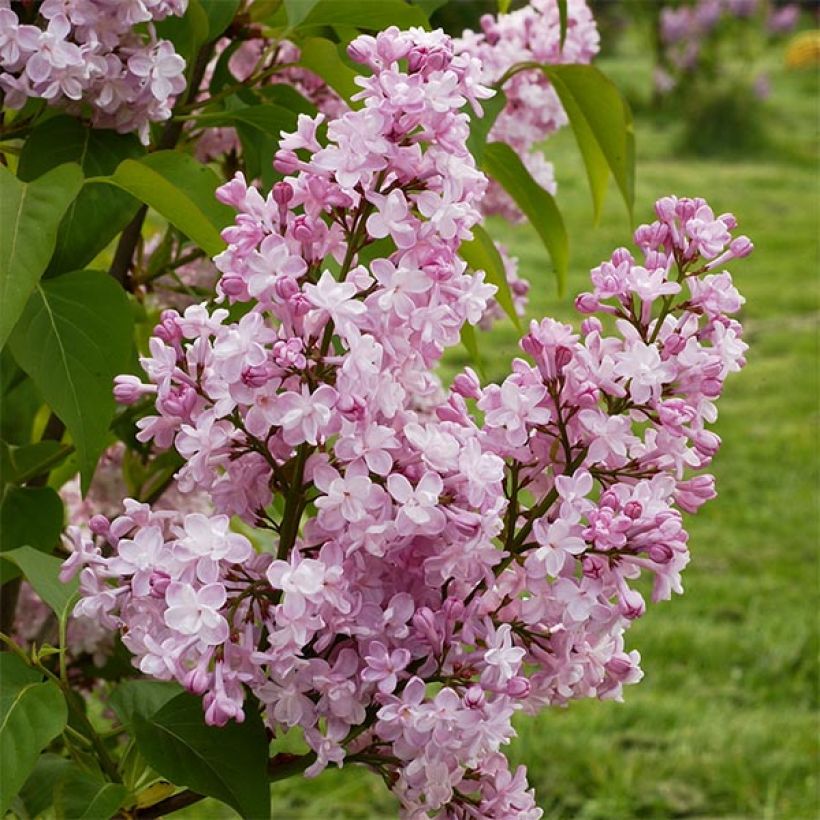

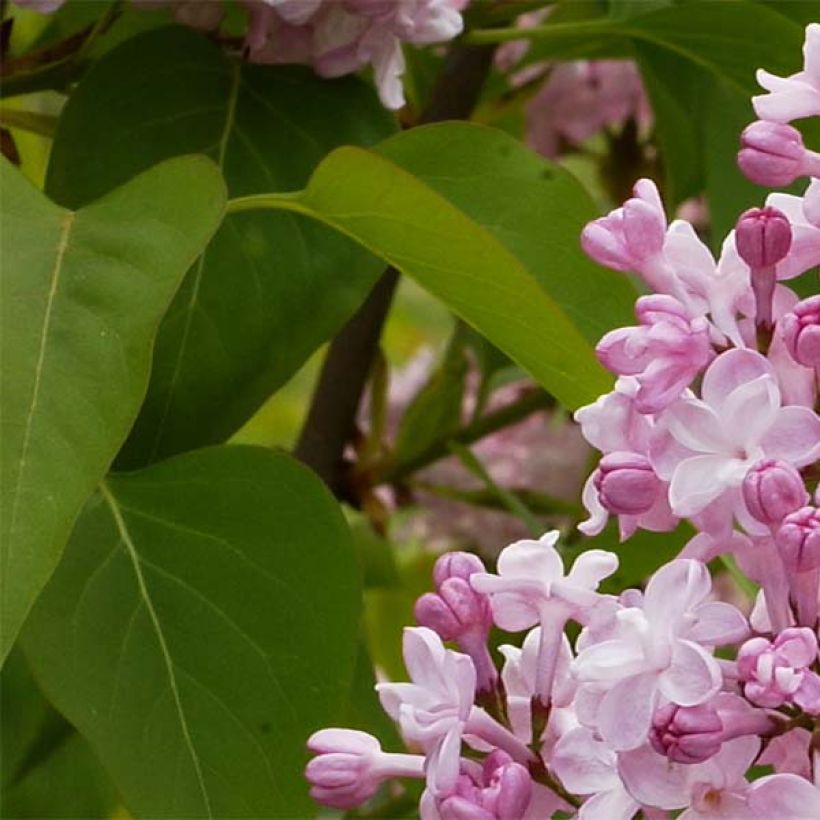

Plant habit
Flowering
Foliage
Botanical data
Syringa
vulgaris
Zhemchuzhina
Oleaceae
Common Lilac, French Lilac
Cultivar or hybrid
Other Syringa - Lilac
View all →Planting and care
The Lilac bush enjoys planting in full sun, in a soil that remains fairly moist and well-drained, even rocky. It can tolerate any type of soil, but prefers slightly limestone soils and is sensitive to strongly acidic soils. It will grow well in partially shaded areas, but the flowering will be reduced. Its hardiness is excellent, beyond -15°C (5 °F). Easy to grow, it requires only mulching and regular watering in dry climates during the summer to maintain a certain level of moisture. If the common lilac grows in the south of our regions, its large-flowered hybrids suffer from a lack of water which often disfigures their thirsty vegetation. In any case, water it during the first few years and in case of marked drought. You can prune the flowering branches to make beautiful bouquets, or at the end of the flowering period to promote the appearance of new flowers and avoid exhausting the bush. Avoid severe pruning that limits the following spring's flowering, unless your Lilac becomes too large.
Planting period
Intended location
Care
-
, onOrder confirmed
Reply from on Promesse de fleurs
Similar products
Haven't found what you were looking for?
Hardiness is the lowest winter temperature a plant can endure without suffering serious damage or even dying. However, hardiness is affected by location (a sheltered area, such as a patio), protection (winter cover) and soil type (hardiness is improved by well-drained soil).

Photo Sharing Terms & Conditions
In order to encourage gardeners to interact and share their experiences, Promesse de fleurs offers various media enabling content to be uploaded onto its Site - in particular via the ‘Photo sharing’ module.
The User agrees to refrain from:
- Posting any content that is illegal, prejudicial, insulting, racist, inciteful to hatred, revisionist, contrary to public decency, that infringes on privacy or on the privacy rights of third parties, in particular the publicity rights of persons and goods, intellectual property rights, or the right to privacy.
- Submitting content on behalf of a third party;
- Impersonate the identity of a third party and/or publish any personal information about a third party;
In general, the User undertakes to refrain from any unethical behaviour.
All Content (in particular text, comments, files, images, photos, videos, creative works, etc.), which may be subject to property or intellectual property rights, image or other private rights, shall remain the property of the User, subject to the limited rights granted by the terms of the licence granted by Promesse de fleurs as stated below. Users are at liberty to publish or not to publish such Content on the Site, notably via the ‘Photo Sharing’ facility, and accept that this Content shall be made public and freely accessible, notably on the Internet.
Users further acknowledge, undertake to have ,and guarantee that they hold all necessary rights and permissions to publish such material on the Site, in particular with regard to the legislation in force pertaining to any privacy, property, intellectual property, image, or contractual rights, or rights of any other nature. By publishing such Content on the Site, Users acknowledge accepting full liability as publishers of the Content within the meaning of the law, and grant Promesse de fleurs, free of charge, an inclusive, worldwide licence for the said Content for the entire duration of its publication, including all reproduction, representation, up/downloading, displaying, performing, transmission, and storage rights.
Users also grant permission for their name to be linked to the Content and accept that this link may not always be made available.
By engaging in posting material, Users consent to their Content becoming automatically accessible on the Internet, in particular on other sites and/or blogs and/or web pages of the Promesse de fleurs site, including in particular social pages and the Promesse de fleurs catalogue.
Users may secure the removal of entrusted content free of charge by issuing a simple request via our contact form.


































